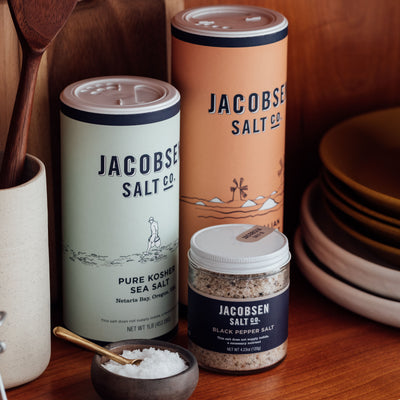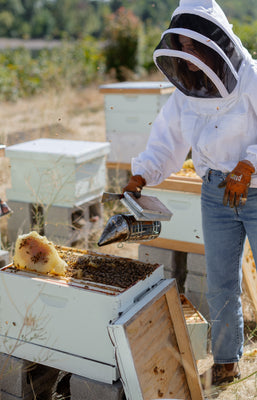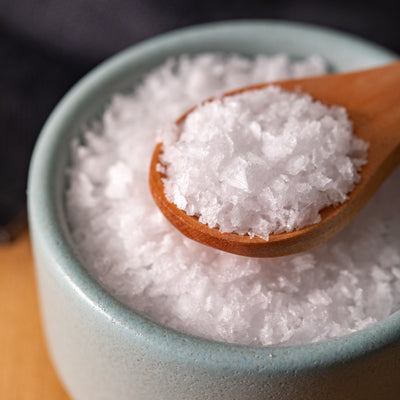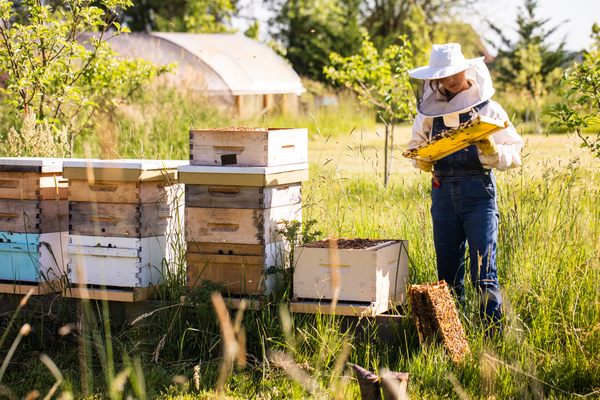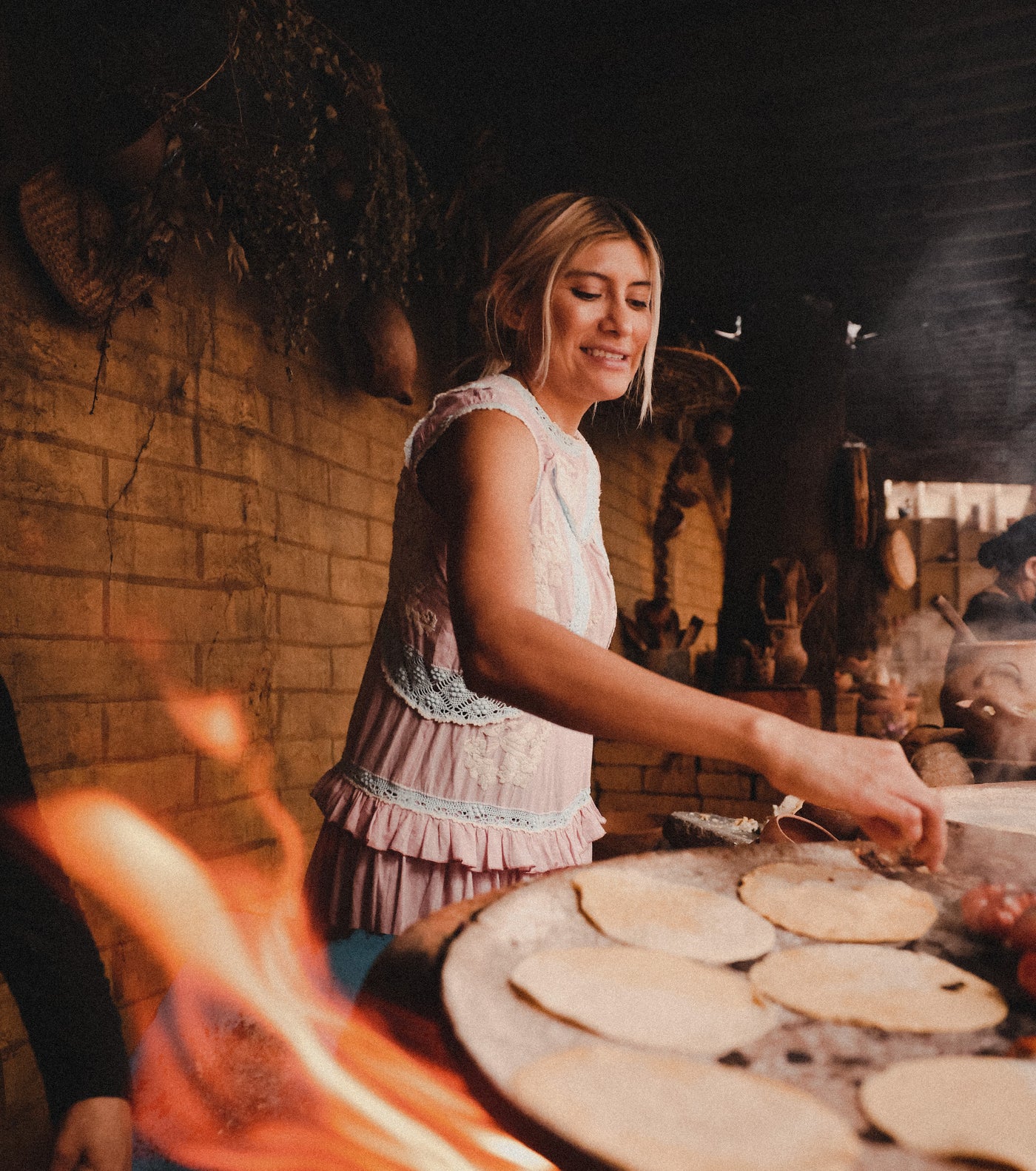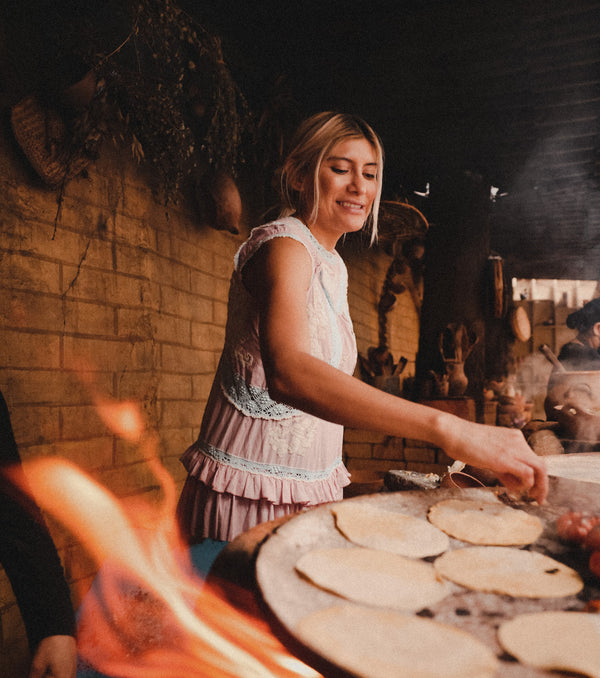

An Ode to the Taco de Sal by Jorge Gaviria
Posted by:
Jacobsen Salt Co.
Posted on:
Sep 08, 2022
 There’s a taco that is widely loved in Mexico, but unfortunately doesn’t benefit from the same awareness here in the States. No, it’s not a taco placero (a Pueblan specialty), nor is it a caramelo (a hunger-busting Sonoran invention of carne asada and melted cheese on a flour tortilla). No, not a taco ahogado either — those are messy, but I quite like them, too. It’s a taco del sal, which directly translates to ‘salt taco.’ The recipe is so simple, so elemental, that one could question whether it even is a taco. A taco de sal consists of a corn tortilla hot off the comal, sprinkled with salt, and deftly rolled up between your palms — a gesture gloriously demonstrated by Senator Alex Padilla in his interview with LA Taco. To me, there’s no better way to enjoy a tortilla than this. A taco de sal is the very embodiment of ‘less is more.’ The salt opens your palate and highlights the natural sweetness and earthiness of nixtamalized corn, still gently steaming with heat. Each bite, to me, tastes a little bit like a journey to the past.
There’s a taco that is widely loved in Mexico, but unfortunately doesn’t benefit from the same awareness here in the States. No, it’s not a taco placero (a Pueblan specialty), nor is it a caramelo (a hunger-busting Sonoran invention of carne asada and melted cheese on a flour tortilla). No, not a taco ahogado either — those are messy, but I quite like them, too. It’s a taco del sal, which directly translates to ‘salt taco.’ The recipe is so simple, so elemental, that one could question whether it even is a taco. A taco de sal consists of a corn tortilla hot off the comal, sprinkled with salt, and deftly rolled up between your palms — a gesture gloriously demonstrated by Senator Alex Padilla in his interview with LA Taco. To me, there’s no better way to enjoy a tortilla than this. A taco de sal is the very embodiment of ‘less is more.’ The salt opens your palate and highlights the natural sweetness and earthiness of nixtamalized corn, still gently steaming with heat. Each bite, to me, tastes a little bit like a journey to the past.
When you stand in line at a tortillería, they’ll often pass you a tortilla to whet your appetite, and nine times out of ten, there’s also a salt shaker (salero) nearby — this is a taco de sal in the making. You can also experience this primordial pleasure at home. Here’s my recipe for a perfect tortilla using heirloom corn masa harina, adapted from my new book MASA: Techniques, Recipes, and Reflections on a Timeless Staple. To turn a fresh tortilla into a taco de sal, all you need to do is, you guessed it, just add your favorite salt. My go-to is a fine sea salt. I encourage you to eat it while standing up, preferably when you’re feeling a bit peckish. Has anything ever tasted better? I really don’t think so.
Written by: Jorge Gaviria of Masienda Photos by: Graydon Herriott

Table Tortillas Using Masa Harina
Table tortillas are perhaps the most common masa application—always in seemingly ample, ready supply. To make them, this recipe calls for masa harina, which is nixtamalized heirloom corn that has been ground into a flour — a home cook’s best friend.
By weight, you can assume the ratio of 1 part masa harina to 1.4 parts water. If you do not have a scale, 1 packed cup of masa harina requires about 1 scant cup [237 ml] of water by volume. One packed cup of dry masa harina should yield about ten 5-inch tortillas. Not all brands are created equal, so you may need to adjust ratios accordingly. (Note: This ratio was calculated using Masienda masa harina.)
- Slowly add the water to the dry masa harina in a large bowl, stirring the masa to incorporate evenly by hand (you may also choose to use a stand mixer fitted with a dough hook).
- Knead until the water is evenly incorporated and no dry, powdery spots remain. You’ll want a finished masa that is moist to the touch, but not sticky.
- Preheat a comal to medium-low heat.
- Open the tortilla press. Lay a plastic liner squarely on the surface of the press. Break off about 2 Tbsp of fresh masa (or whichever size you prefer) and roll the masa into a ping-pong-size ball with your hands. Place the masa ball in the center of the plastic liner; to end up with a centered tortilla in the press, it sometimes helps to place the masa ball about 1 inch from the center, closer to the press’s hinge/pivot point. Place a second plastic liner on top of the masa ball.
- With the top half of your fingers, slightly flatten the masa until it begins to adhere to the plastic liners (this prevents the masa from shifting around when you close the press). Close the tortilla press lid and apply pressure by pushing down on the lever.
- Open the tortilla press lid and remove the flattened masa/uncooked tortilla.
- Carefully peel away one plastic liner at a time. It helps to hold the tortilla face up (flat in your hand) and first carefully peel off the top liner; then, pinching one of the outer edges/corners of the plastic, flip the uncooked tortilla over to your opposing hand (the tortilla should now be directly touching your open-faced, opposing hand, ideally your pinky through middle fingers for best stability) and peel off the second plastic liner off.
- Raise the temperature of your preheated comal to medium heat. In a smooth, backhanded sweeping motion, place the uncooked tortilla directly on the nonstick surface. Sear the first side for 20 to 30 seconds. I recommend using a timer, especially as you get a feel for your pan and the overall process. The hotter the temperature, the less time will be needed per side (even as little as 15 seconds, depending on how high the temperature is). The sear should yield a surface with even, light-colored spotting throughout. Flip and sear on the second side for another 20 to 30 seconds. Finally, flip the tortilla to its original seared side, allowing it to continue cooking through the center to your desired consistency and doneness. Play with sear times as you see fit.
- If you intend to enjoy the tortilla immediately (and I do hope that’s the case), continue cooking for a bit longer. Once it’s puffed for about 10 seconds, move the tortilla to the outside edge of your comal (if space allows) where it is slightly cooler, to let the tortilla continue cooking through the center for an additional 5 to 10 seconds per side.
- If you’re serving tortillas with a meal, transfer to a kitchen towel or tortilla warmer (tortillero) and allow the cooked stack of tortillas to steam for 5 minutes. This will help prevent the tortillas from cracking.
- Enjoy!

